Edward Teach: retirement
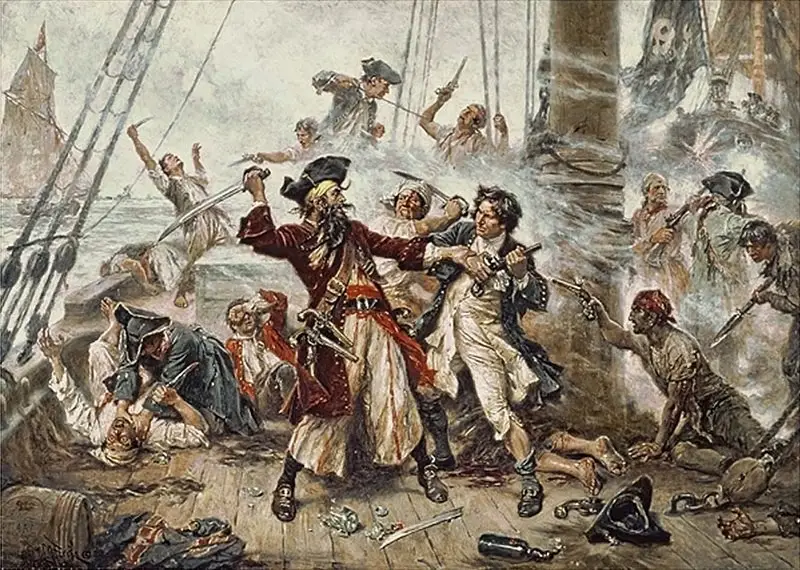
The Capture of the Pirate Blackbeard, painting by Jean Ferris
Teach's movements from late 1717 to early 1718 remain a mystery. He and Bonnet were probably responsible for the attack at St. Eustatius in December 1717. Henry Bostock claimed to have heard the pirates say they would head for the Spanish-controlled Samana Bay on Hispaniola, but a quick search revealed no pirate activity. Captain Hume reported on February 6:
Hume reinforced his crew and tried to track down the two pirate ships, but to no avail. However, they saw that the pirates had sunk a French ship off the island of St. Christopher, and also reported that they were last seen "walking along the northern side of Hispaniola." It is likely that these two ships were piloted by Teach and Bonnet.
In March 1718, pirates spotted a sloop from Jamaica. The sloop was quickly stopped and its captain, David Herriot, was invited to join the pirates. Harriot and his crew agreed, and Teach sent the crew on the Adventure. They sailed to the Gulf of Honduras, where they added to their flotilla one more ship and four sloops. On April 9, Teach's enlarged fleet plundered and burned the Protestant Caesar. His fleet then sailed to Grand Cayman, where they captured another ship.
Teach probably sailed towards Havana, where he captured a small Spanish ship that had left a Cuban port. They then sailed to the wreck of the 1715 Spanish fleet off the west coast of Florida. There he disembarked the crew of a captured Spanish sloop and then sailed north to the port of Charleston, South Carolina, attacking three ships along the way.
Blockade of Charleston and sailing to Beaufort Bay
In May 1718, Teach's flotilla blockaded the port of Charleston (Charlestown). By this time he had given himself the title of commodore and was at the height of his power. All ships entering or leaving the port were stopped. There was no patrol ship in Charleston, and his pilot boat was the first to be captured.
Over the next few days, pirates plundered about nine ships attempting to sail past the port of Charleston, where Teach's fleet was anchored. On one of the captured ships was Samuel Wragg, a member of the Carolina Provincial Council. Its passengers were questioned about the ships still in port. Teach informed the prisoners that his fleet required medical supplies from the colonial government of South Carolina, and if they did not arrive, all prisoners would be executed, their heads sent to the governor, and that all captured ships would be burned.
Rugg agreed to Teach's demands. When the demands were met, Teach withdrew his fleet. He fulfilled his part of the deal and freed the captured ships and all the prisoners.
Teach soon learned that Governor Woods Rogers had left England with several warships, having received orders to clear the West Indies of pirates. Teach's flotilla of ships headed north along the Atlantic coast and entered Topsail Bay (commonly known as Beaufort Harbor) on the North Carolina coast to set the ships in motion to clean their hulls.
Queen Anne's Revenge ran aground. The ship's main mast was broken. Teach tried to refloat it with ropes, but was unsuccessful.
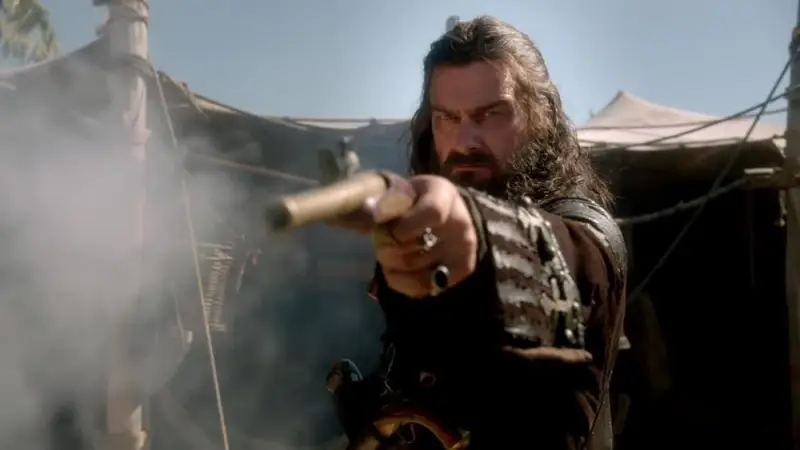
Still from the series “Black Sails”
Here the pirates learned of the issuance of a royal decree of pardon for all pirates who surrendered before September 5, 1718. The decree contained a clause that the pardon applied only to crimes committed before January 5, 1718. Bonnet and Teach could have been hanged if convicted for their actions in Charleston, but on the other hand, Governor Charles Eden may well have turned a blind eye. To be sure, Teach waited to see what would happen to his colleague Bonnet.
Bonnet immediately went to the city of Bath in a small sailing boat, where he surrendered to Governor Eden and received a pardon. Teach, meanwhile, took all the valuables and provisions from Bonnet's ship, and put the crew ashore. Bonnet went to take revenge, but could not find Teach.
Bonnet and his crew returned to piracy and were captured on September 27, 1718 at the mouth of the Cape Fear River. All but four of those caught were later tried and hanged in Charleston. The captured pirate ships were later incorporated into a fleet under the command of the governor of South Carolina, who attacked a group of pirates near the entrance to Charleston Harbor, killing 49 pirates. Their bodies were hanged on gallows near White Point.
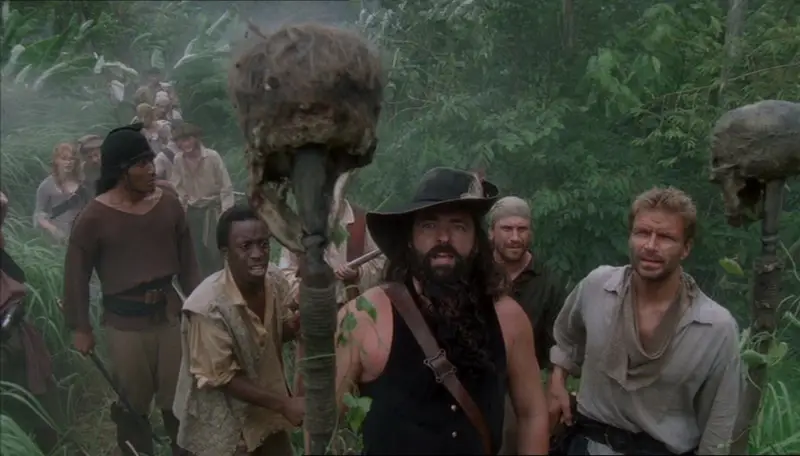
Still from the film “Pirates of the Seven Seas: Blackbeard”, 2006
Before sailing his remaining sloop north to Ocracoke Sound, Teach landed about 25 men on a small sandy island. He continued on to Bath, where in June 1718 - just a few days after Bonnet left to petition for clemency - he and his much-reduced crew received a pardon from Governor Eden.
Teach settled in Bath. Eden allowed him to sail to St. Thomas to become a privateer. By the end of August, however, he had returned to piracy again, and that same month the governor of Pennsylvania issued a warrant for his arrest, but by this time Teach was already long gone.
Teach then captured two French ships leaving the Caribbean before returning to Ocracoke.
Teach often stopped at Ocracoke Sound. It was an ideal vantage point for observing ships sailing between the settlements of northeastern Carolina, and it was from this vantage point that Teach spotted the approaching ship of another English pirate, Charles Vane.
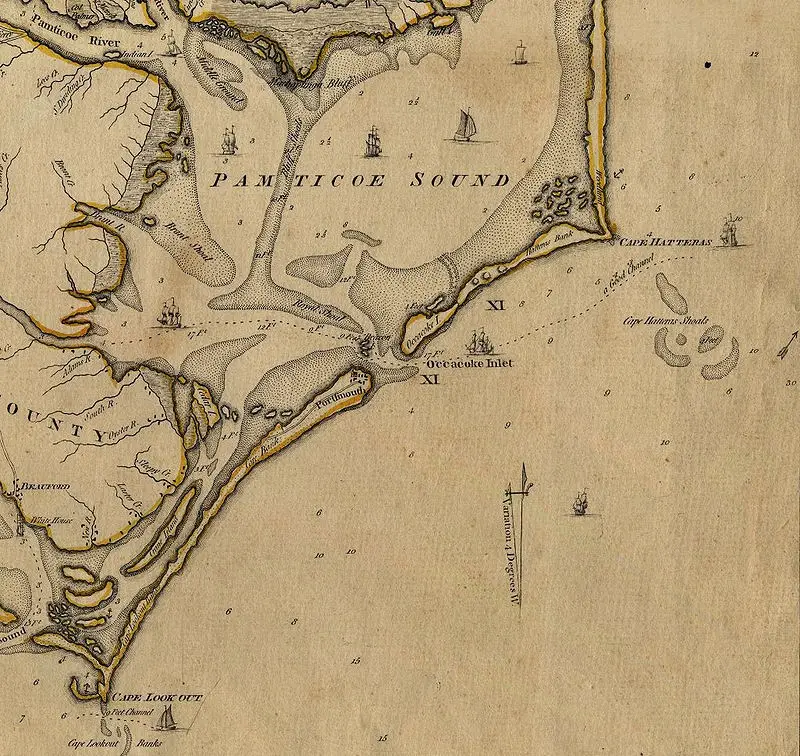
Ocracoke, Teach's base, on a 1775 map
Vane rejected an offer of pardon from Woodes Rogers and escaped from the warship that the English captain had brought with him to Nassau on July 26, 1718. He was also pursued by Benjamin Hornigold, Teach's former commander, now a pirate hunter. The two captains spent several days on the southern tip of Ocracoke Island, and with them were also famous pirate captains Israel Hands, Robert Deal and Jack Rackham.
Hunt for Teach
News news of Teach's meeting with Vane spread throughout the neighboring colonies, so alarming the governor of Pennsylvania that he sent two sloops to capture the pirates. This failed, Virginia Governor Alexander Spotswood was also concerned that the supposedly retired filibuster and his team were living in neighboring North Carolina.
Some of Teach's former crew had already moved to several Virginia port cities, and on July 10, 1718, Spotswood issued a proclamation requiring all former pirates to present themselves to the authorities and surrender weapon and do not travel in groups of more than three people.
Spotswood learned that Queen Anne's Revenge's former quartermaster William Howard was in the area and, believing he might know of Teach's whereabouts, ordered the arrest of the pirate and his two slaves.
Howard was found guilty and sentenced to hang, but was nevertheless rescued by a commission from London, which ordered Spotswood to pardon all acts of piracy committed by surrendered pirates before July 23, 1718.
Meanwhile, Spotswood had received valuable information from Howard about Teach's whereabouts and planned to send his troops across the border into North Carolina to capture him.
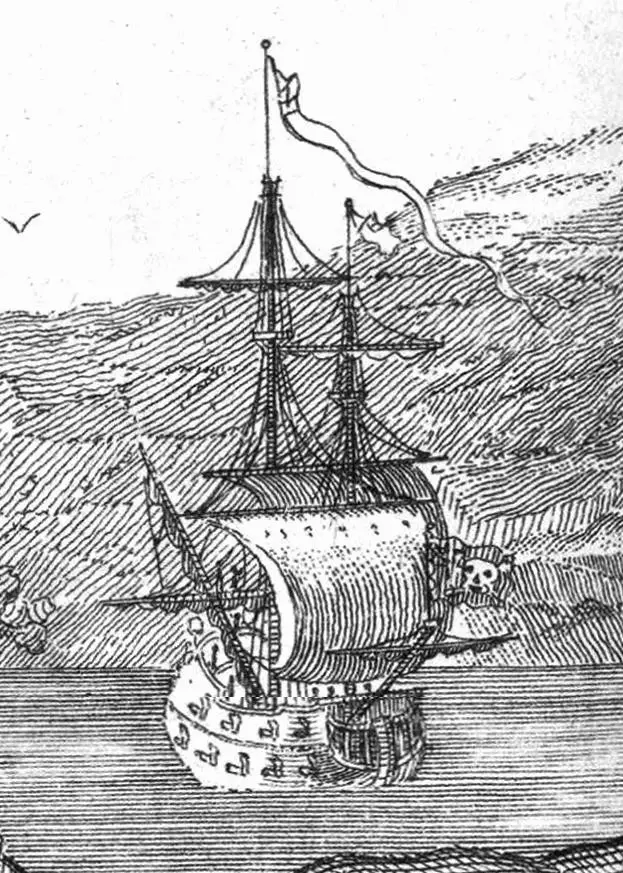
Teach's ship "Queen Anne's Revenge" in a 1736 engraving
He also wrote to the Lords of Trade, suggesting that the crown might benefit financially from Teach's capture. Spotswood personally financed the operation, perhaps believing that Teach had untold treasures hidden. He ordered Captains Gordon and Brand to travel overland to Bath. Lieutenant Robert Maynard was to take command of the two requisitioned sloops and approach the city from the sea.
An additional incentive for Teach's capture was the offer of a reward from the Virginia Assembly, over and above any other that could be received from the crown.
Lieutenant Maynard took command of the two armed sloops on 17 November. He was given 57 people. Maynard took the larger of the two ships and named her Jane; the rest took the Ranger, which was commanded by Officer Hyde, a subordinate to Maynard.
Death of Blackbeard
They sailed from Kekoutan on the James River on November 17th. The two sloops moved slowly to give Brand's party time to reach Bath. Colonel Moore went to the city to find out if Teach was there, and responded that he was not there, but was expected “any minute.”
Lieutenant Maynard discovered the pirates anchored on the inland side of Ocracoke Island on the evening of November 21st. He found out their location from the ships he stopped along the way, but unfamiliar with the local channels and shoals, he decided to wait until the next morning to attack. He stopped all traffic in the bay, preventing any warning of his presence, and posted lookouts on both sloops to ensure that Teach could not escape to sea.
Teach on the other side of the island was busy entertaining guests and did not post a sentry. At that time, he had about 25 people left.
At dawn, Maynard's two sloops entered the channel, just behind a small boat conducting soundings for two larger vessels. They were quickly spotted by the pirate crew and opened fire as soon as Maynard's sloops came within range of their guns. The boat quickly retreated to the Jane while Teach cut the Adventure's anchor cable. As her crew raised her sails, the Adventure maneuvered her starboard guns toward Maynard's sloops, which were now slowly closing the gap.
There was further small arms fire before Teach's ship ran aground while Maynard dropped anchor and then lightened his ship to pass the sandbar. Another version says that both of Maynard's ships ran aground, but the lieutenant himself did not mention this in his journal.
The pirates' broadside was devastating: in an instant, Maynard lost up to a third of his forces. About 20 people on the Jane were wounded or killed, and 9 on the Ranger. Hyde was dead, and his second and third officers were either dead or seriously wounded. His sloop was so badly damaged that it played no further role in the battle.
The lieutenant kept many of his men below deck and, awaiting boarding, ordered them to prepare for close combat. The two ships came into contact with each other as the Adventure's grappling hooks reached their target, and several grenades made from bottles of gunpowder and shot exploded on the sloop's deck.
As the smoke cleared, Teach led his men in a boarding attack, emboldened by the sight of Maynard's apparently empty ship, his men opening fire on the small group formed by Maynard and his men at the stern. Then the rest of Maynard's men broke out of the hold and rushed to attack.
The plan to take Teach and his crew by surprise worked; the pirates did not expect this attack. Teach rallied his men, and the two groups fought on the deck, which was already slick with the blood of those killed or wounded by Teach's broadside.
Maynard and Teach fired flintlocks at each other. Next, Teach grabbed his dirk and managed to break Maynard's sword. Despite superior training and a slight numerical advantage, the pirates were driven to the bow of the ship, leaving Teach and Maynard isolated and allowing the crew of the Jane to surround them.
As Maynard retreated to fire again, Teach moved to attack him but was wounded in the neck by one of Maynard's men. Severely wounded, Teach was attacked by several more members of Maynard's team and killed. The remaining pirates quickly surrendered.
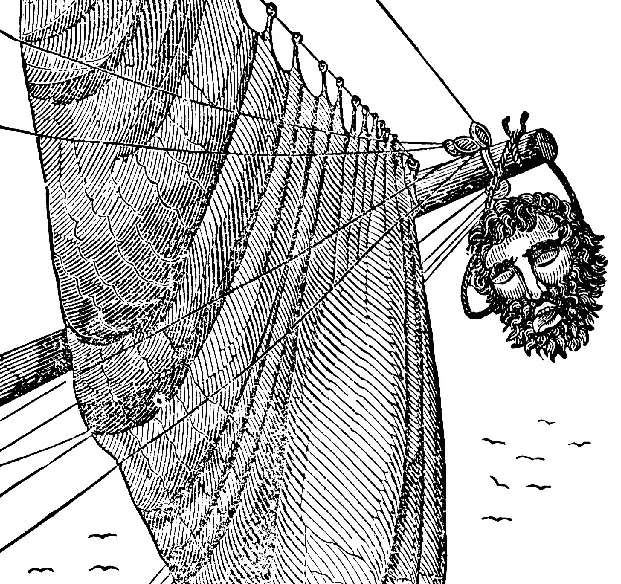
Teach's head on the bowsprit of Maynard's sloop
Those who remained on the Adventure were captured.
Maynard later examined Teach's body and noted that he had been shot at least five times and had about twenty severe cut wounds on his body. He also found several pieces of correspondence, including a letter to a pirate from Tobias Knight. His headless corpse was then thrown into the bay, and his head was hung from the bowsprit of Maynard's sloop so that a reward could be collected for the elimination of the pirate leader.
Information